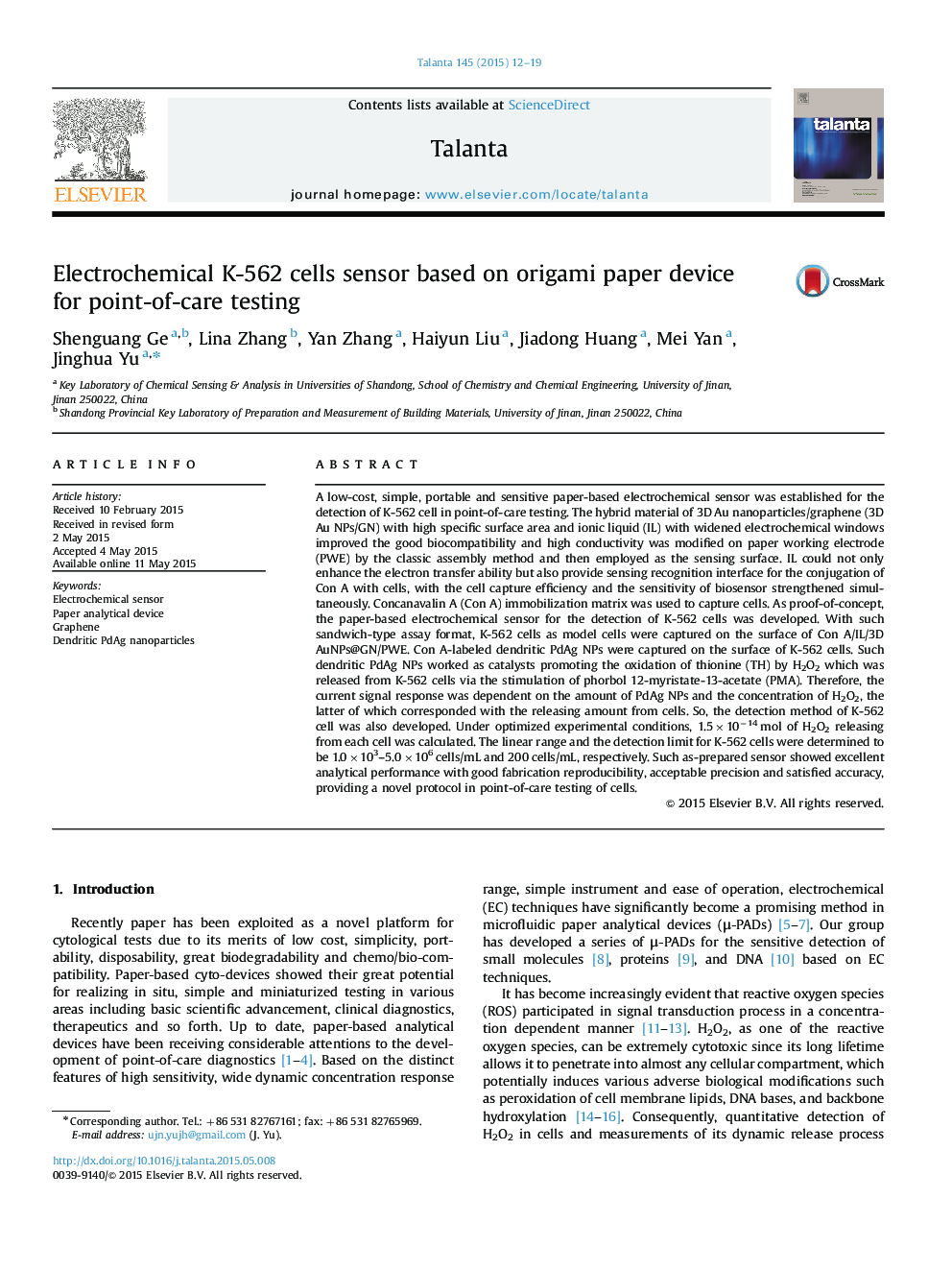| Article ID | Journal | Published Year | Pages | File Type |
|---|---|---|---|---|
| 1243938 | Talanta | 2015 | 8 Pages |
•A low-cost, simple and portable paper-based electrochemical sensor was established.•Ion liquid supported 3D Au NPs@GN composite constructed sensing interface.•Dendritic PdAg NPs catalyzed the oxidation of thionine by H2O2.
A low-cost, simple, portable and sensitive paper-based electrochemical sensor was established for the detection of K-562 cell in point-of-care testing. The hybrid material of 3D Au nanoparticles/graphene (3D Au NPs/GN) with high specific surface area and ionic liquid (IL) with widened electrochemical windows improved the good biocompatibility and high conductivity was modified on paper working electrode (PWE) by the classic assembly method and then employed as the sensing surface. IL could not only enhance the electron transfer ability but also provide sensing recognition interface for the conjugation of Con A with cells, with the cell capture efficiency and the sensitivity of biosensor strengthened simultaneously. Concanavalin A (Con A) immobilization matrix was used to capture cells. As proof-of-concept, the paper-based electrochemical sensor for the detection of K-562 cells was developed. With such sandwich-type assay format, K-562 cells as model cells were captured on the surface of Con A/IL/3D AuNPs@GN/PWE. Con A-labeled dendritic PdAg NPs were captured on the surface of K-562 cells. Such dendritic PdAg NPs worked as catalysts promoting the oxidation of thionine (TH) by H2O2 which was released from K-562 cells via the stimulation of phorbol 12-myristate-13-acetate (PMA). Therefore, the current signal response was dependent on the amount of PdAg NPs and the concentration of H2O2, the latter of which corresponded with the releasing amount from cells. So, the detection method of K-562 cell was also developed. Under optimized experimental conditions, 1.5×10−14 mol of H2O2 releasing from each cell was calculated. The linear range and the detection limit for K-562 cells were determined to be 1.0×103–5.0×106 cells/mL and 200 cells/mL, respectively. Such as-prepared sensor showed excellent analytical performance with good fabrication reproducibility, acceptable precision and satisfied accuracy, providing a novel protocol in point-of-care testing of cells.
Graphical abstractFigure optionsDownload full-size imageDownload as PowerPoint slide
